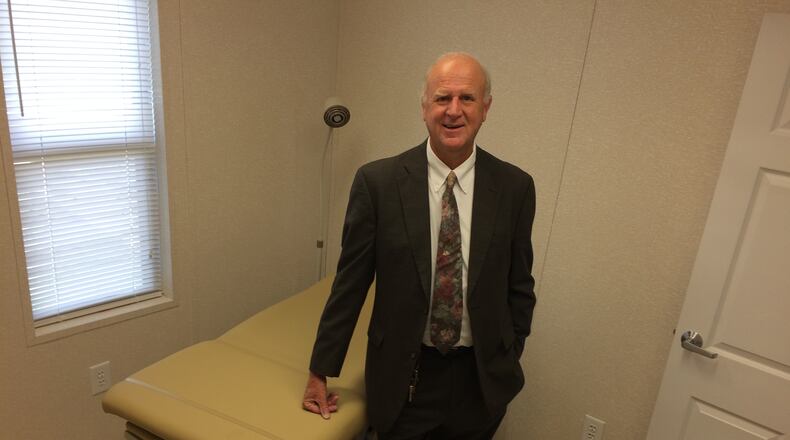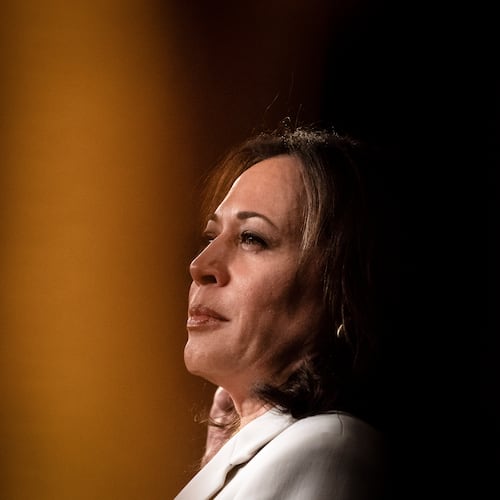Crawfordville, Ga. -- One of Georgia's poorest communities is tired of the waiting, the endless jawing and the ideological hair-splitting.
Taliaferro County, with its population of 1,600 souls and not much else, is about to start up its own government-sponsored health care system. When operations begin next month, it will be headquartered in a double-wide trailer, under the auspices of the local school board.
“My kids need health care. Because my kids need to be healthy in order to learn,” said Allen Fort, who is both the county school superintendent and principal of its only school. Its classrooms hold 180 students, from pre-K to 12th grade.
“We hope that a large part of the community understands that we want them to utilize our services, too. We want them to know that they have convenient, basic health care here,” he said.
Fort, a 44-year-veteran of Georgia schools, is the lanky revolutionary behind the effort. If his name sounds at all familiar, it’s because Fort made a 2014 run for state school superintendent. As a Republican.
A few days ago, I made the drive east on I-20. Upon arrival, Fort escorted me through the pristine double-wide that sits a few steps from his school. Waiting room furniture hasn’t arrived yet, but equipment has begun to fill two examination rooms.
It is a facility for vaccinations, flu diagnoses, and the occasional snake-bit farmer, not knee-surgery or cancer treatments. The $120,000 capital outlay may not sound like much, but the annual budget of the Taliaferro school budget runs to $3.5 million or so.
Were the Gwinnett County school system to make a proportional investment with its $2.13 billion budget, the result would be a $73 million hospital.
Taliaferro (pronounced ‘Toliver’) County is a poster child for the problems of rural Georgia. Poverty is rampant. The median income is $12,000 less than the state average. Every student under Fort’s care qualifies for free or reduced lunches.
Distance is the biggest enemy. Jobs and health care are at least 20 miles away in every direction: Greensboro, Washington, Thomson and Sparta. A sick student means a parent must leave what is likely a time-clock job — in which lost minutes mean lost money — to drive to the school, drive back to the doctor, then to a pharmacy, and finally back home.
“Now, we can walk them out to the clinic, where there will be a nurse or a physician’s assistant, that can diagnose and prescribe,” Fort said. “Now, (parents) haven’t missed a day’s work, while their child has gotten some health care.”
Community Health Care Systems, which operates clinics elsewhere in rural Georgia — largely but not wholly with federal cash, will supply Taliaferro with a medical staff. Inability to pay won’t get you kicked out the door.
Right now, health care in the county is the dose of cough syrup that can be purchased at the mall across the street from the school.
But that’s a bit of ancient Taliaferro humor. It’s really just a Dollar General.
Nor is the place empty of common sense. Two years ago, the county rejected an offer from an explosives company that sought to store up to 120 tons of ammonium nitrate in the community.
The economic development bonanza might have produced two or more valuable jobs and helped the tax base, but the lack of ambulance service and a fire department staffed only with volunteers became a sticking point.
The Taliaferro project began last year with a conversation started by John O’Shea, a retired Emory University professor who has become something like a missionary for rural health care in Georgia. He arranged an initial meeting with Taliaferro County Commission Chairman Charles Ware. (The Episcopal Diocese of Atlanta had a hand in the project, too.)
Ultimately, it was decided that the school system would be the best vehicle for the impromptu health care system. It’s what holds the county together, quite literally. Sixty percent of Taliaferro lacks access to broadband communication. The school is one of the few hotspots around with reliable internet service.
From the beginning, rejection of the Affordable Care Act has been a been a requirement for Republican political success in Georgia. So it is no surprise that, when it comes to health care and the governor’s race, Brian Kemp has held back. But Medicaid expansion has been a constant talking point for Democrat Stacey Abrams. Win or lose, she may have already shifted a statewide discussion.
I asked Fort what he had learned in the last year. He leaned in, knowing he might be saying more than he ought to. Clearly, Fort is a man tired of idle chatter.
“Now, Jim,” he began. “What do we have in the rainy day fund now? Three or four billion dollars?”
(Gov. Nathan Deal’s office says the state’s emergency fund stands at about $2.5 billion, but that didn’t negate Fort’s point.)
“We talk about rural health care, which we figured out a way to provide for this county,” he continued. “What’s $120,000 out of $3 billion?” (Answer: .004 percent.)
“It doesn’t take all this rhetoric and all these meetings and all this stuff to understand that if I can figure out how we can have a clinic built, put it up, hook it up to electricity in a convenient spot that serves the local school and the community – this is not rocket science, not in 2018.
“We can plop these things down. If they work, fine. If they don’t, they can be pulled up and moved to someplace that does use them,” he said.
Fort's point is that the fear of doing the wrong thing has prevented us from doing anything — as hospital after hospital closes in rural Georgia. And he may well be right about that. But it is Taliaferro's isolation in a bountiful state that seemed to bother Fort most.
“Georgia is prosperous. It has money. It has things. And we’re on an interstate exit between Atlanta, which has some of the nation’s premier hospitals, and Augusta, where the Medical College of Georgia is. And we don’t have basic health care.”
He didn’t come right out and say it, but it sounded like the former Republican candidate for state school superintendent was making an important moral point.
About the Author
The Latest
Featured




